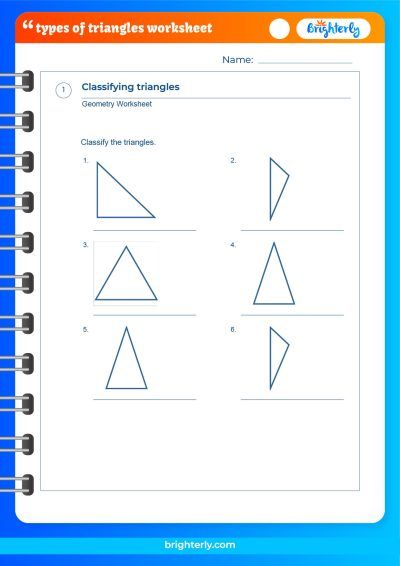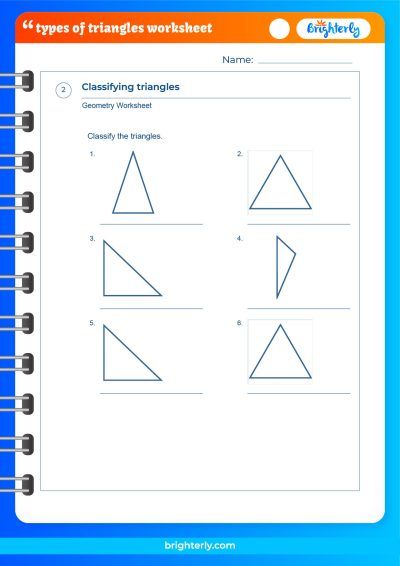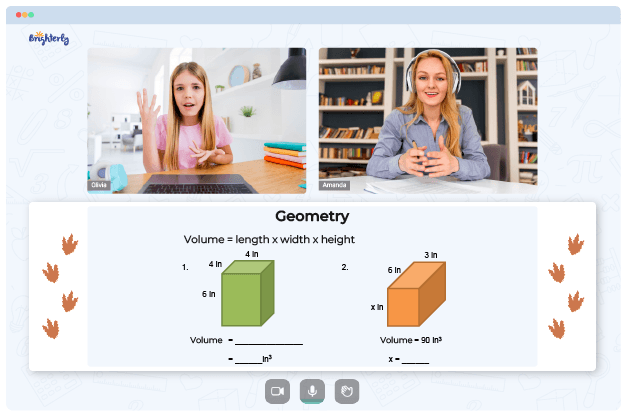Scalene Triangle – Definition With Examples
Updated on January 11, 2024
Welcome to Brighterly, where we make learning math fun and engaging for children! In this comprehensive guide, we will explore the fascinating world of scalene triangles. These unique geometric shapes can be found in various aspects of our lives, from the design of bridges to the structure of crystals. So, buckle up and get ready to dive into the world of scalene triangles with Brighterly!
What is a Scalene Triangle?
A scalene triangle is a type of triangle that has all three sides with different lengths and all three angles with different measures. In this unique geometric shape, no sides or angles are equal, making it stand out among other types of triangles. Learning about scalene triangles can be fun and engaging for children, as they explore the fascinating world of geometry. In this article, we will delve into the definition, properties, types, and various aspects of scalene triangles, which are essential to understanding this intriguing shape.
Definition of Scalene Triangle
A scalene triangle is defined as a triangle with three unequal sides and three unequal angles. In simple terms, it means that all the sides and angles of a scalene triangle have different measurements. This distinguishes them from other triangles, such as equilateral and isosceles triangles, which have equal sides or angles. Scalene triangles are the most diverse among triangles, as they come in various shapes and sizes. They are an essential concept in mathematics, particularly in the study of geometry.
Properties of Scalene Triangle
Scalene triangles have some unique properties that set them apart from other triangles. These properties include:
- All sides are unequal: In a scalene triangle, no two sides have the same length.
- All angles are unequal: The three angles in a scalene triangle are different in measure.
- Angle-Side relationship: The largest angle is opposite the longest side, and the smallest angle is opposite the shortest side.
- Triangle Inequality Theorem: The sum of the lengths of any two sides is greater than the length of the remaining side.
Understanding these properties helps in identifying and working with scalene triangles in various mathematical problems and real-life applications.
Types of Scalene Triangles
There are no specific types or classifications of scalene triangles, as their shape and size can vary greatly. However, scalene triangles can be categorized based on their angles:
- Acute Scalene Triangle: All three angles are less than 90 degrees.
- Right Scalene Triangle: One angle measures exactly 90 degrees.
- Obtuse Scalene Triangle: One angle is greater than 90 degrees.
This classification helps in understanding the different shapes that scalene triangles can take and their properties based on the angles they possess.
Triangles are a major topic in the math curriculum for children, and Brighterly offers the best resources and worksheets to help kids learn this important topic.
Difference Between Scalene, Isosceles and Equilateral Triangles
Triangles can be classified into three main categories based on the number of equal sides and angles they have:
- Scalene Triangle: All sides and angles are unequal.
- Isosceles Triangle: Two sides and two angles are equal.
- Equilateral Triangle: All three sides and angles are equal.
These distinctions help in understanding the unique characteristics of each type of triangle and how they differ from one another.
Scalene Triangle Formula
To find the area of a scalene triangle, the Heron’s formula is used. It is named after the ancient Greek mathematician, Heron of Alexandria. The formula is as follows:
Area = √(s(s-a)(s-b)(s-c))
Where s is the semi-perimeter of the triangle, and a, b, and c are the side lengths of the triangle. The semi-perimeter is calculated using the formula:
s = (a + b + c) / 2
Perimeter of a Scalene Triangle
The perimeter of a scalene triangle is calculated by adding the lengths of all three sides:
Perimeter = a + b + c
Where a, b, and c are the lengths of the triangle’s sides. Since all sides are unequal, the perimeter is unique for each scalene triangle.
Area of a Scalene Triangle
As mentioned earlier, the area of a scalene triangle can be found using Heron’s formula. Once the semi-perimeter (s) is calculated, you can substitute the values of a, b, c, and s into the formula to find the area:
Area = √(s(s-a)(s-b)(s-c))
Scalene Triangle Examples
Let’s look at an example of a scalene triangle to understand the calculations better.
Suppose we have a scalene triangle with sides a = 5, b = 6, and c = 7. First, we calculate the semi-perimeter:
s = (a + b + c) / 2 = (5 + 6 + 7) / 2 = 9
Next, we use Heron’s formula to find the area:
Area = √(9(9-5)(9-6)(9-7)) = √(9(4)(3)(2)) = √216 = 14.7 (approximately)
The perimeter of this scalene triangle would be:
Perimeter = a + b + c = 5 + 6 + 7 = 18
Practice Questions on Scalene Triangle
- Find the area and perimeter of a scalene triangle with sides measuring 8, 15, and 17 units.
- Determine the type of scalene triangle (acute, right, or obtuse) with angles measuring 30, 60, and 90 degrees.
- Identify the largest angle in a scalene triangle with sides of length 7, 24, and 25 units.
Conclusion
As we come to the end of this enriching journey through the world of scalene triangles, it is evident that these unique shapes play a crucial role in geometry and mathematics. At Brighterly, our goal is to ignite the passion for learning in children, and we believe that understanding the properties, differences, and formulas related to scalene triangles will help them develop a strong foundation in geometry.
Scalene triangles are not just theoretical constructs confined to the pages of a worksheets. They have numerous practical applications in real-life situations, such as architecture, engineering, art, and even nature. By studying scalene triangles, children can appreciate the beauty and versatility of geometry and its impact on the world around us.
As children continue to explore the captivating realm of mathematics with Brighterly, they will discover the interconnectedness of various geometric concepts and their significance in daily life. By nurturing their curiosity and empowering them with knowledge, we can help them develop critical thinking and problem-solving skills, preparing them for a future filled with possibilities.
So, let’s continue this exciting adventure of learning together with Brighterly, as we unveil the fascinating secrets hidden within the world of scalene triangles and beyond!
Frequently Asked Questions on Scalene triangle
What is a scalene triangle?
A scalene triangle is a triangle with three unequal sides and three unequal angles.
How is a scalene triangle different from an isosceles triangle?
A scalene triangle has all sides and angles unequal, while an isosceles triangle has two sides and two angles equal.
How do you find the area of a scalene triangle?
You can find the area of a scalene triangle using Heron’s formula: Area = √(s(s-a)(s-b)(s-c)), where s is the semi-perimeter and a, b, and c are the side lengths.






